Learn how to safely prepare and serve peach to babies as early as 6 months! You can puree or offer as a finger food for baby led weaning.
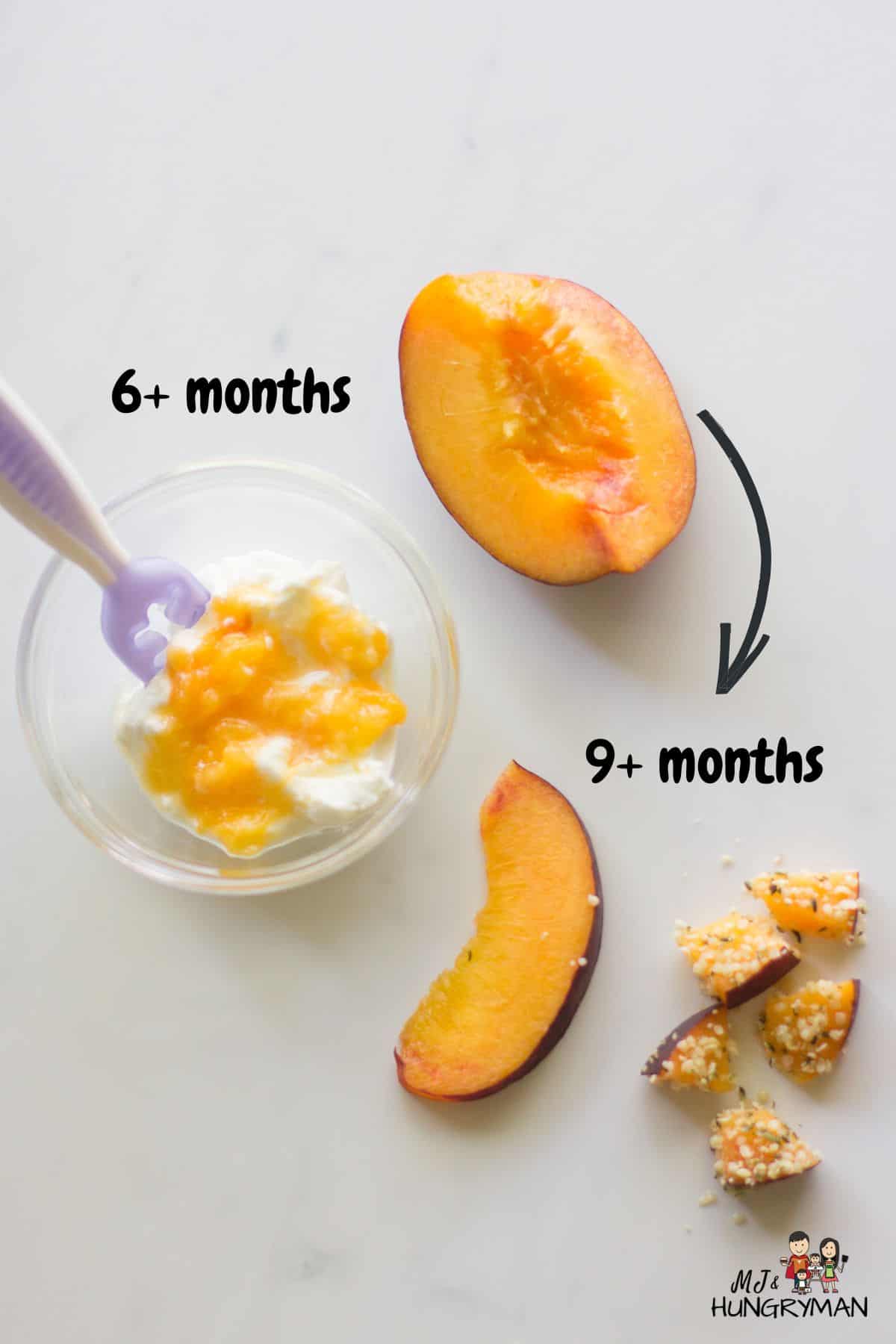
Jump to:
When can Babies Eat Peaches?
If soft and ripe, peaches can be introduced to babies as soon as they’re ready to start solids, usually around 6 months. It’s important to remember that your baby is unique and that rather than going by the calendar, you need to make sure your baby is DEVELOPMENTALLY ready to start solids.
If you’re unsure, be sure to grab this FREE handout!
Health Benefits
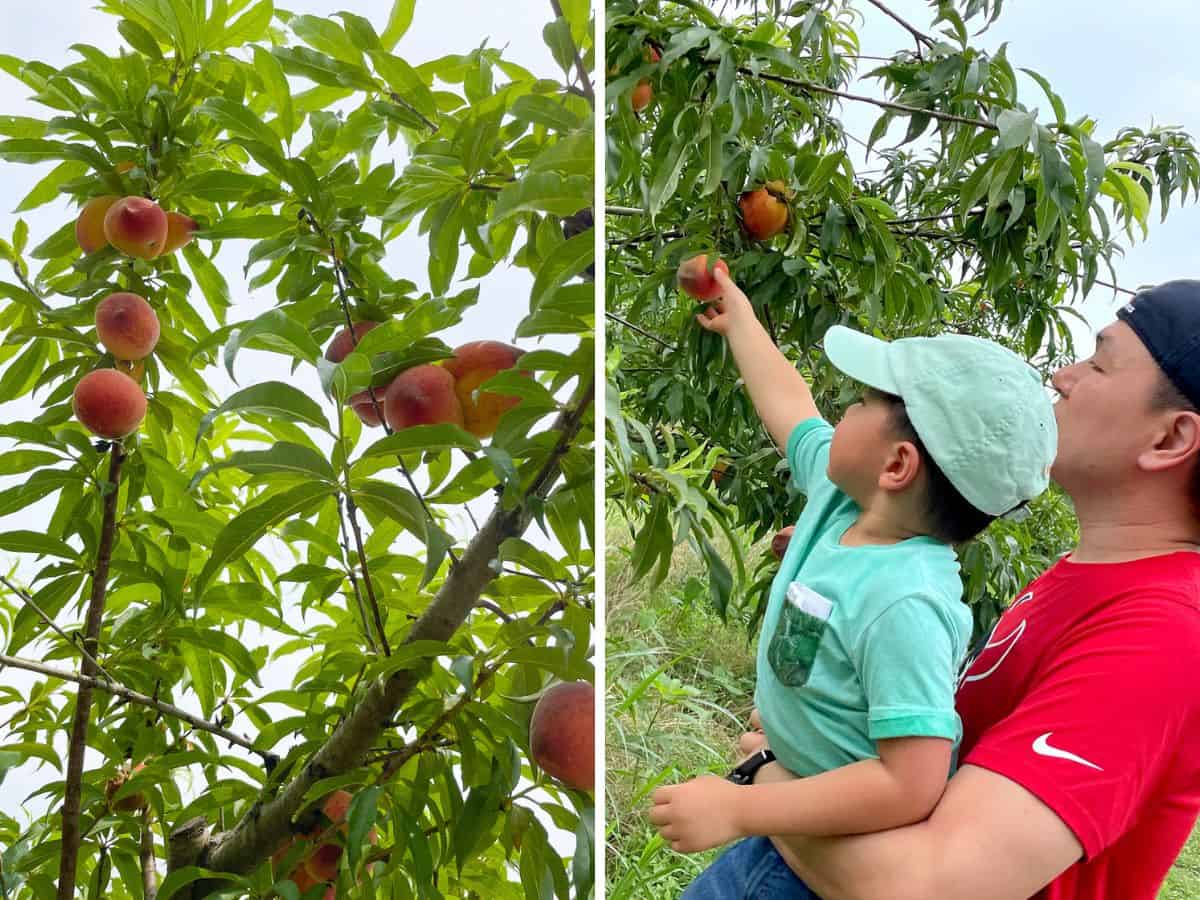
Peaches are a stone fruit, along with nectarines (which are actually a variety of peach!), plums, and apricots. They are a moderate source of vitamin C, which helps enhance the absorption of iron, vitamin A, potassium, and fiber.
Whenever possible, try to keep the skin on as it contains loads of vitamins, antioxidants, and fiber.
Selecting the Best Peach
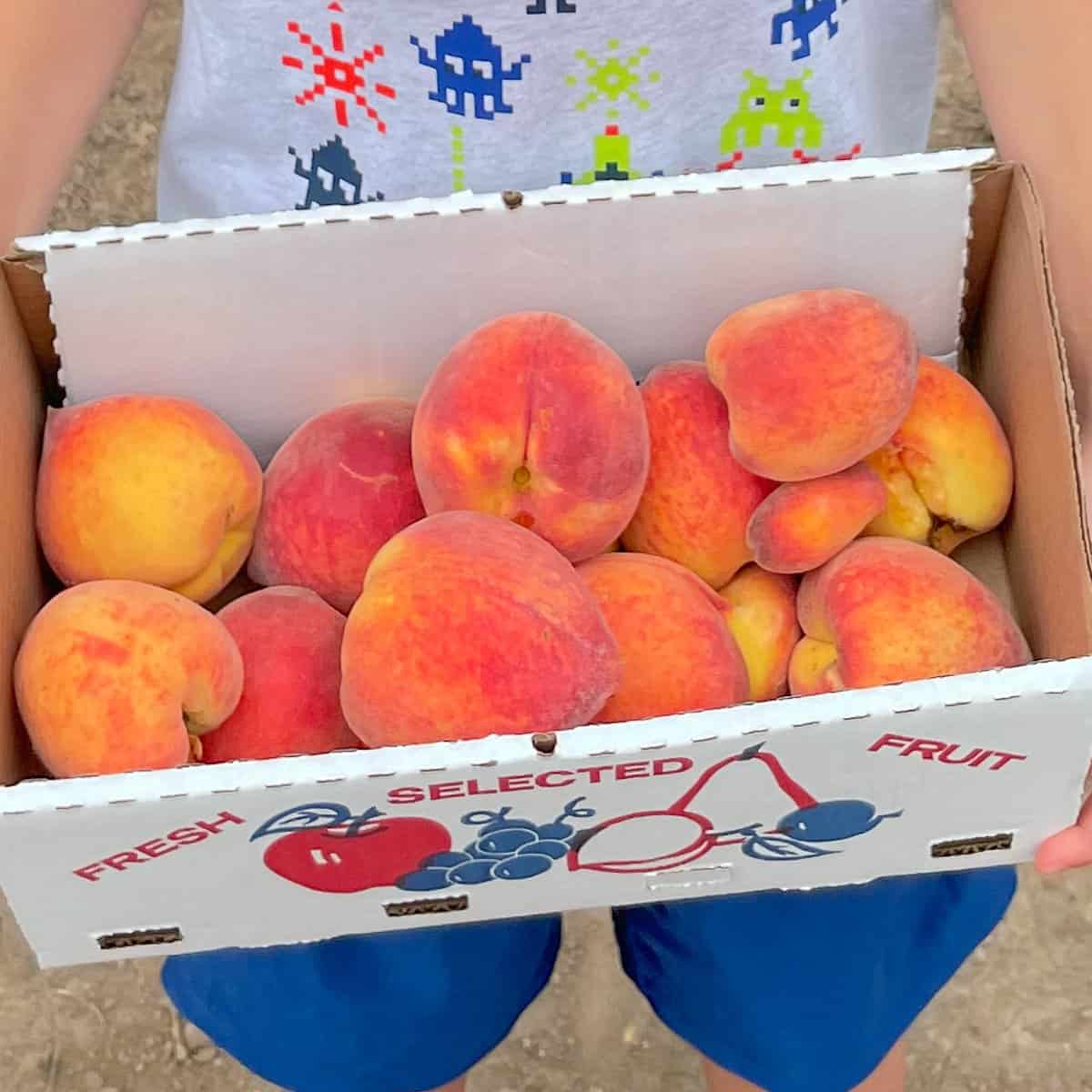
No summer is complete without biting into a perfectly ripe, sweet, and juicy peach. Sadly, the season is just too short, so we try to enjoy as many as we can with sticky juices dripping down our chins.
Did you know that there are over 2000 varieties of peaches globally? While they come in different colors and shapes, they are classified according to how easily the pit can be removed from the flesh.
- Clingstone peaches are those whose flesh clings tightly to the pit, making it difficult to remove. These are sweeter, juicier, and softer making them perfect for babies! The peel comes off very easily too when ripe.
- With freestone peaches, you can easily remove the pit from the flesh. They are typically larger than clingstones and are especially great for freezing.
When trying to pick the best peach, look for a firm one as this indicates that it’s been freshly picked. It should also have a pleasant aroma. It should be free of bruises and other blemishes.
Unlike with mangoes, color is a great indicator of ripeness. Look for ones with a vibrant yellow or orange color and a partially or fully covered deep red blush.
You want the peach to be very soft and juicy for your baby, so the best ones are those that give a little when you squeeze gently with your fingers.
And if you see wrinkles, that's a sign of water leaving the fruit, thereby intensifying the peachy flavor!
Peaches are one of the dirty dozen foods and contain high amounts of pesticide residue. So try to purchase organic, if possible.
Peach Puree
It truly is so simple to make! All you need are ripe fresh peaches or frozen peaches that have been thawed. I recommend using fresh when in season for best flavor. You can freeze fresh peaches so you can enjoy the flavor of summer throughout the year.
- If using fresh, there's no need to peel the skin. Rinse well and slice. Add your peach slices to a food processor or blender. Depending on how juicy your peaches are, you many need to add a little bit of water, breastmilk, or formula.
- Blend until smooth! You can strain out the skin bits if you wish, but I recommend keeping them for added fiber, nutrition, and texture.
Peach Puree Combinations
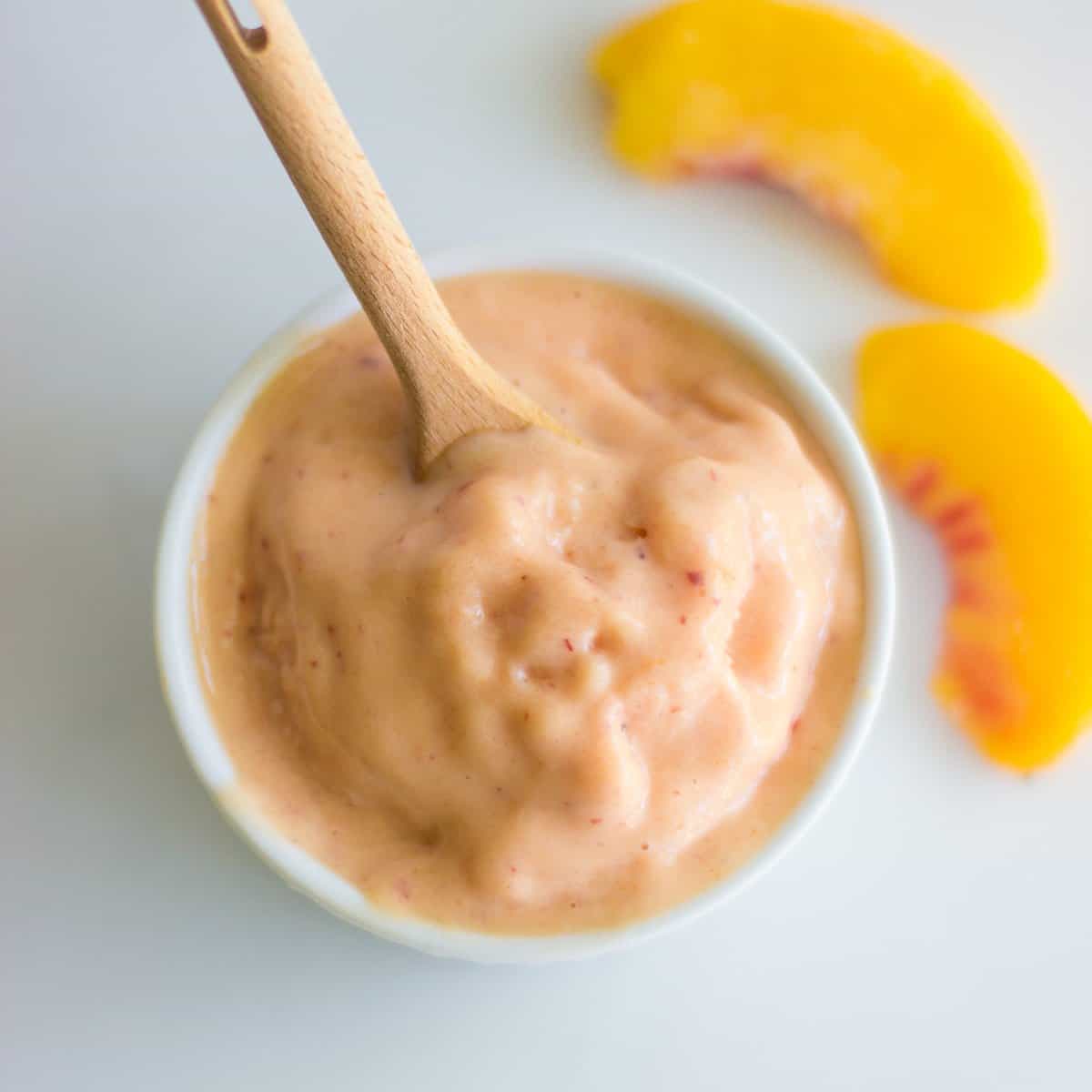
You can serve peach puree by itself or mix in other foods such as:
- Yogurt (pictured)
- Baby oatmeal
- Chicken
- Lentils
- Quinoa
- Applesauce
- Banana
- Mango
- Pear
- Beets
- Butternut squash
- Cauliflower
- Carrots
- Zucchini
- Sweet potatoes
Peach for Baby Led Weaning
6+ month old
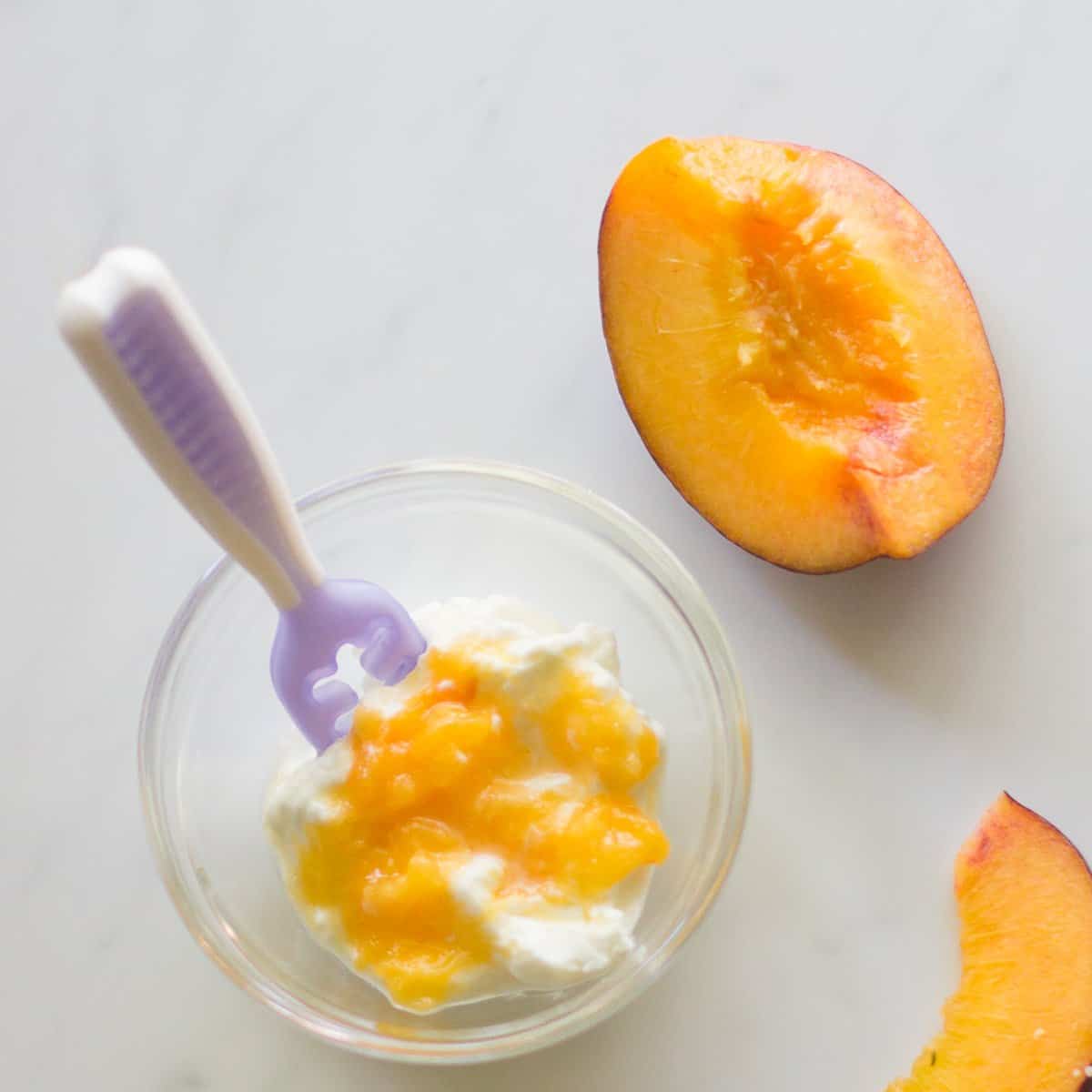
I know it sounds counterintuitive but bigger is better and safer at this age. So try serving quartered or even halved peach that is very ripe.
I recommend leaving the skin on as it will help with the grip and prevent the fruit from flying everywhere. Your baby will be able to suck on the juices with their gums.
But if you feel nervous, you can remove the skin and coat with ground nuts and seeds, shredded coconut, almond flour, etc. to make it easier to grab.
Frozen peaches are a great option too as they will get super soft once thawed.
You can also mash or puree the peach and add to various foods as suggested above.
9+ month old
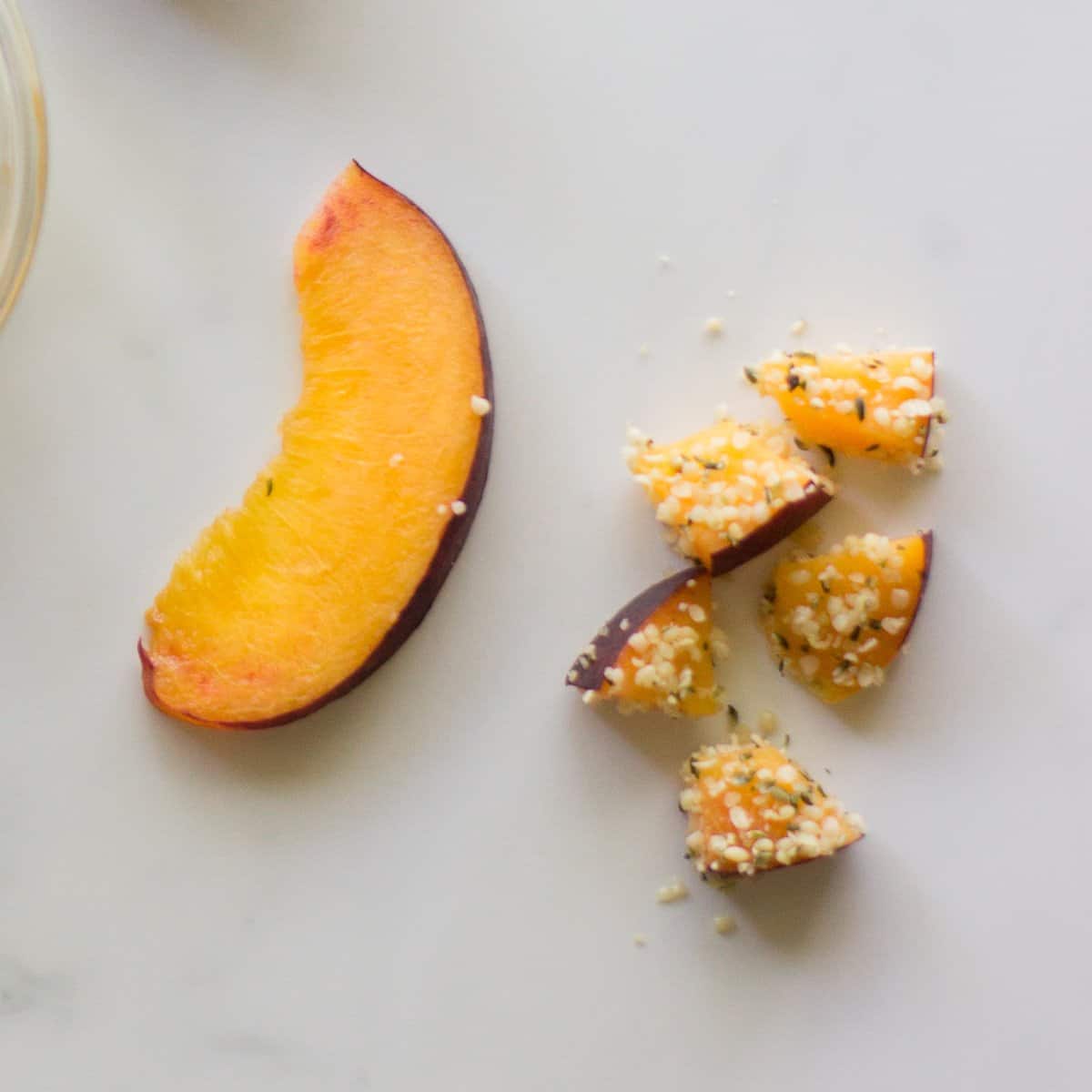
You can continue offering large pieces or thin slices with or without the skin. You can also cut into bite-sized pieces but be sure to coat them as suggested above to make them less slippery.
Peach Recipes to Try
Frequently Asked Questions
Yes! They are particularly high in insoluble fiber, which helps with regularity.
As long as the fruit is soft and ripe and is served in an age-appropriate way as shown in this article, it is safe. Peach allergy is pretty rare as well.
I recommend holding off until 2 years of age as they are oftentimes packed in syrups and added sugars.
As long as they are soft, there is no need to cook them. However, if you want to, the best method is to steam as it preserves most of the nutrients.
If you want to learn how to prepare other specific food(s), check out my How To Series!
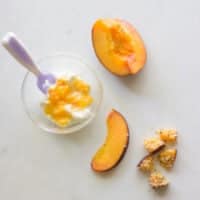
Peach Puree
Ingredients
- 3 ripe peaches
- water, breastmilk, or formula (as needed)
Instructions
- Rinse peaches. Remove the pit and cut into slices.
- Add to food processor or blender and blend until smooth. Add liquid of choice as needed (see note).
Notes
- You can use frozen peaches. Just be sure to thaw first.
- It's important to introduce your baby to texture from the start so instead of blending until smooth all the time, mix it up by keeping the consistency chunky.
- If there are still pieces of skin, you can strain it out. However, I encourage you to keep it for added texture and nutrition.
- To store:
- Refrigerate: Transfer to an airtight container (love the linked jars under the "equipment" section). Will keep for 3-4 days.
- To freeze: Transfer to ice cube tray and freeze for at least 4 hours. Once frozen solid, pop out the molds, and transfer to a freezer-safe bag or container. Will keep for up to 3 months.

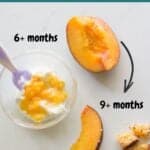
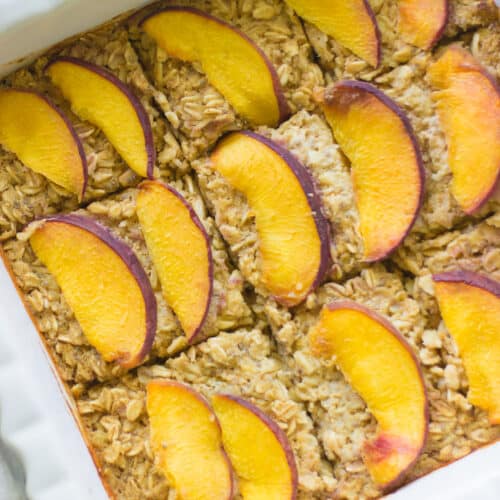
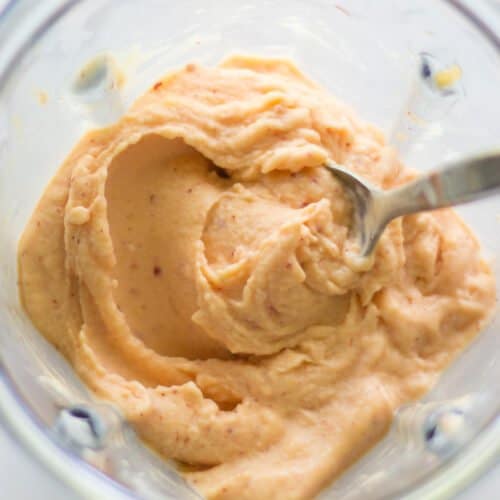
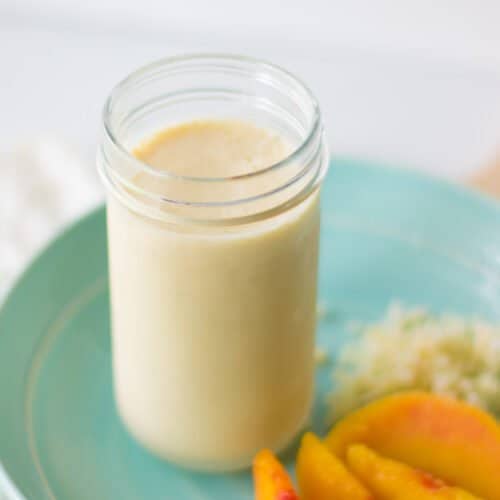
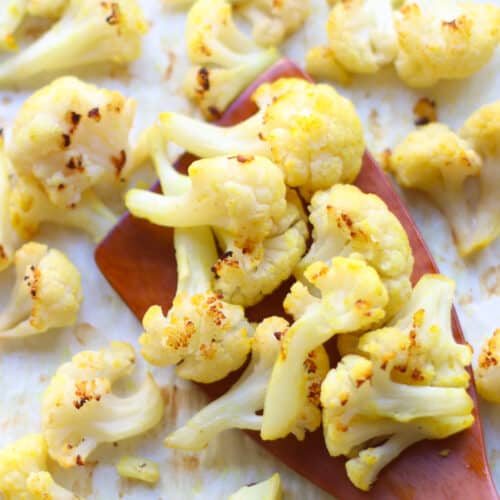
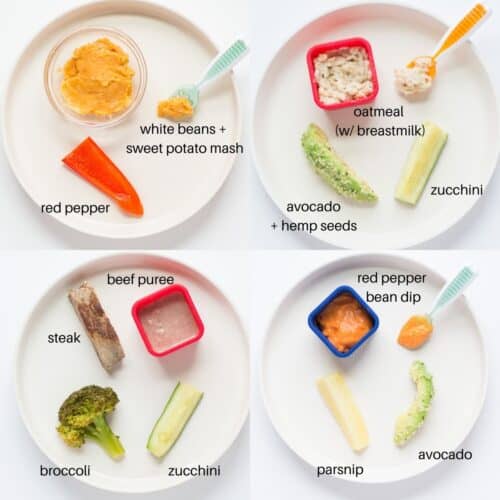
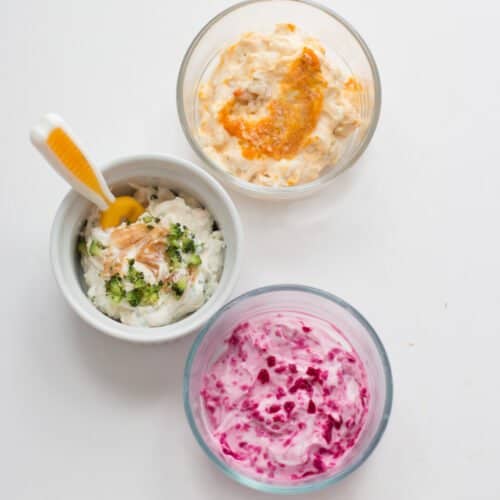
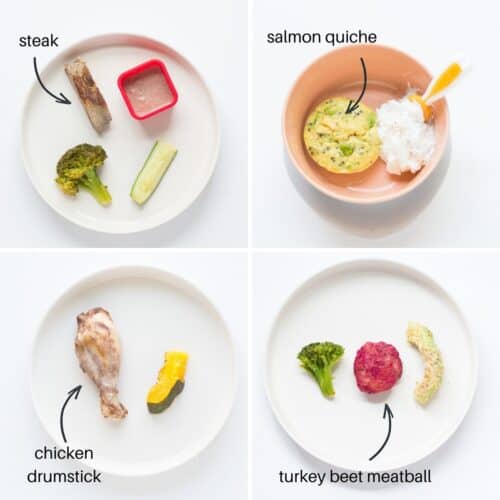

Leave a Reply